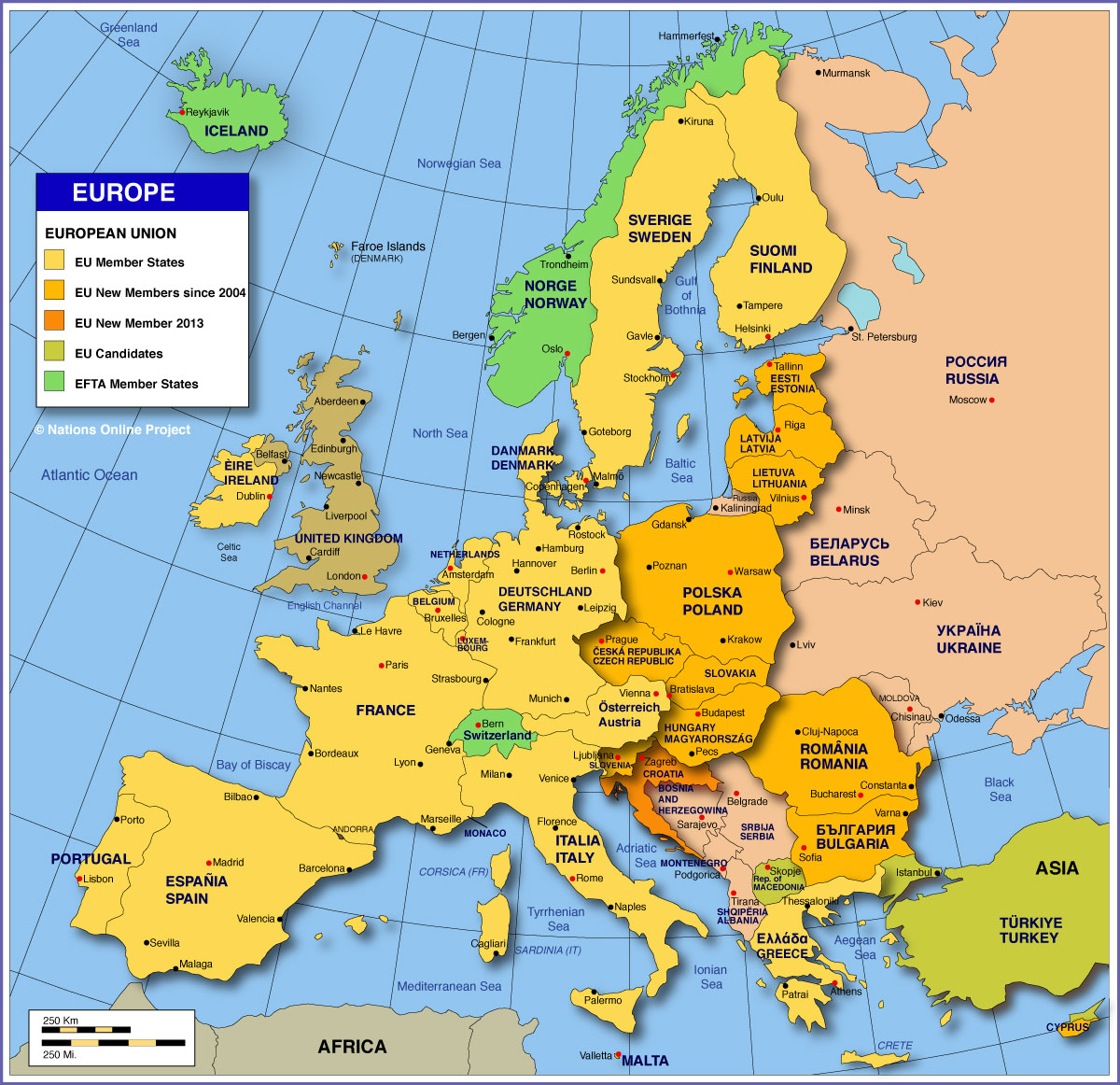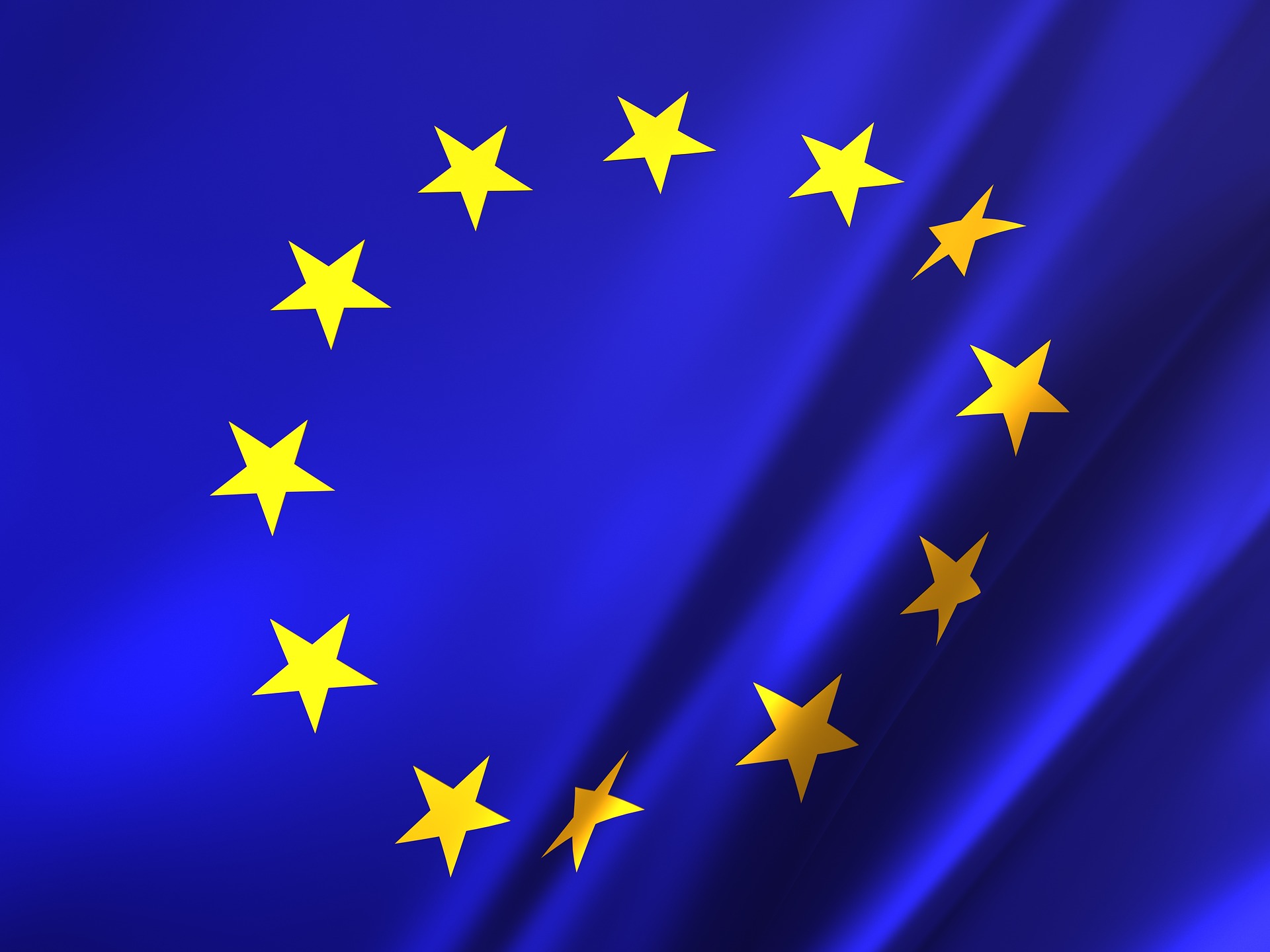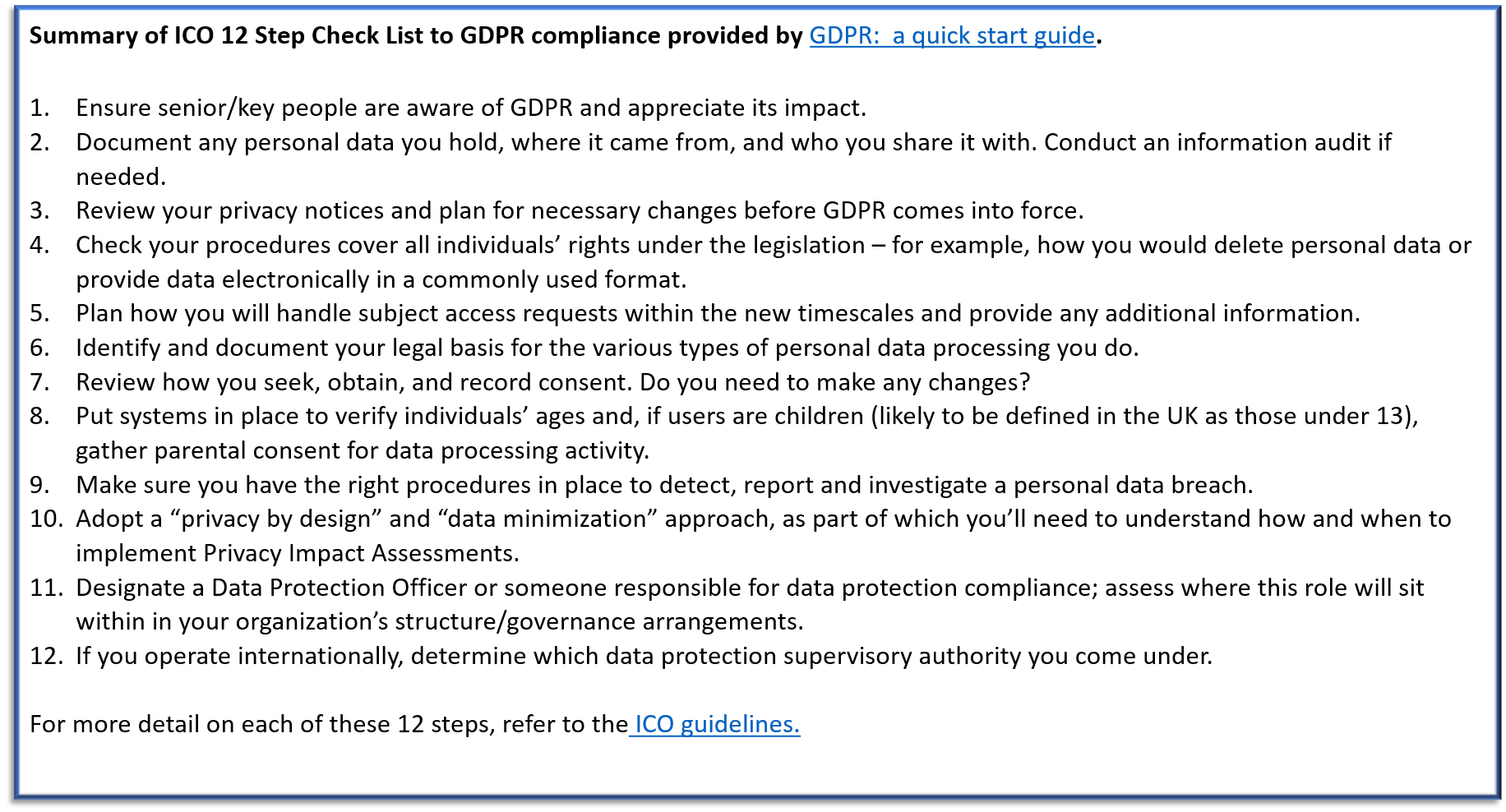E.U. Regulations that are Enforceable Against U.S. Higher Education Institutions
Published by: WCET | 11/27/2017
Tags: Cybersecurity, Data And Analytics, International Students, Legislation, Regulation, Security, State Authorization
Published by: WCET | 11/27/2017
Tags: Cybersecurity, Data And Analytics, International Students, Legislation, Regulation, Security, State Authorization
What do you know about the E.U.’s new General Data Protection Regulation (GDPR)? If you have not read up on this important regulation recently, never fear! Today, Cheryl Dowd, Director of the State Authorization Network, is here to provide background information and the basic components of the GDPR, so you can help your institution review and create processes to be compliant by May 25, 2018.
Thank you, Cheryl!
Enjoy the read,
~Lindsey, WCET
Does your institution or organization process the personal information of a person residing in a European country that is part of the European Union (EU)?
Does your institution have a distance education program for which your institution has been enrolling students residing in EU countries?
Has your institution received admissions from residents, or have alumni or donors in a country that is part of the EU?

What about European study abroad programs or research partnerships with residents of EU countries?
Did you say yes to any of these questions? If so, you need to read this to help your institution review and create processes to be compliant with the E.U.’s new General Data Protection Regulation (GDPR) by May 25, 2018.
The GDPR aims to protect E.U. citizens from data breaches. We know, from even a casual observation of the news, that data breaches have occurred and are a significant concern for citizens outside the EU. Do the breaches at Equifax, Anthem, Target, and Yahoo ring a bell? Higher education institutions are also ripe for breaches! Institutions in the United States and Canada may be able to benefit in our data protection practices by putting the processes in place necessary to comply with EU regulations.
WCET recently became aware of these EU regulations and their direct connection to our US and Canadian institutions and organizations. Our intent is to keep this simple to get you started. We offer you a little history, basic components, debunked myths, and some direction on steps you might take. Our research is based on four main resources:
The EU GDPR website indicates that the E.U. Parliament approved and adopted the regulations in April 2016, after four years of preparation and debate. The enforcement date is set for May 25, 2018. Noncompliance with the regulations is expected to carry large fines. This regulation replaces the 1995 Data Protection Directive 95/45/EC. The website further explains that the new regulations were created to “protect and empower all EU citizens data privacy and reshape the way organizations across the region approach data privacy.”  Lindsay McKenzie from Insider Higher Ed reported in a November 6, 2017 article (E.U. Data Protection Law Looms) that Gian Franco Borio, a lawyer who spoke at a recent Educause session, believes that these new regulations provide a “significant expansion of protection for the personal data of EU residents”. The GDPR will apply to any organization worldwide that processes the personal information of EU residents.
Lindsay McKenzie from Insider Higher Ed reported in a November 6, 2017 article (E.U. Data Protection Law Looms) that Gian Franco Borio, a lawyer who spoke at a recent Educause session, believes that these new regulations provide a “significant expansion of protection for the personal data of EU residents”. The GDPR will apply to any organization worldwide that processes the personal information of EU residents.
The differences between the new GDPR and the 1995 Data Protection Directive 95/45/EC were reported by Allyssa Provazza in her article, GDPR requirements put end-user data in the spotlight, Computer Weekly.com, November 2, 2017. She indicated that the new regulations mandate that there be tighter requirements and justification for documenting and defining what data an organization processes. Additionally, the new regulations provide more support for the data subject regarding consent by requiring more clarity in language to ensure consent is informed and freely given. Finally, the GDPR was created to have consistent enforcement across all member countries rather than the previous enforcement in each individual EU member state.
Ms. Provazza also suggests that the definition of personal data in Europe is much broader than in the United States. The GDPR additionally includes identifiers such as: biometric data, political opinions, health information, sexual orientation, and trade union membership.
Highlights from the EUGDPR website FAQ’s indicate:
Myths as proposed and debunked by Jimmy Desai in Computer Weekly.com: GDPR: Five Myths You will Encounter in your Compliance Journey, June 2017.
Computer Weekly.com has published many articles and a one-page infographic explaining the GDPR. The infographic (GDPR: The State of Play) offers the seven projects that are to be implemented to comply with the regulations. An important aspect for colleges and universities to note is the statement in the bottom left corner of the infographic referring to organizations that are outside of the E.U.
The Information Commissioner’s Office (ICO), the agency responsible for enforcing GDPR in the UK developed a 12-step check list to prepare for compliance of the GDPR. Institutions may find direction by putting processes in place based on these 12 steps. In a May 2017 ComputerWeekly.com article, Jim Mortleman provided a summary of the ICO 12 steps in his article, GDPR: a quick start guide.

WCET began reporting on cybersecurity earlier in 2017. In February 2017, we offered our first Frontiers blog post, Words can be intimidating: Cybersecurity and Our Role in Higher Education, to introduce the topic area and to engage our institutional members to understand that data and infrastructure protection from breaches is just as important for our institutions as it is in the rest of the business world. Note that regrettable breaches have infiltrated major companies such as Equifax and Target. A follow up article in April 2017, Data Privacy for Institutes of Higher Education (IHE), described recent data breaches in higher education to alert our readers that attackers target IHEs due to the institutions possessing vast amounts of computing power and education’s competing desire to provide open access to resources. Both articles echo the philosophy and goals of the GDPR for institutions and organizations to create comprehensive cybersecurity systems to protect our students, faculty, staff, and donors who entrust the institution and organization with their personal information.
Perhaps these new regulations in the EU will cause our college and university leaders to take notice and embrace a change in culture to create collaborative efforts to address data security. The result would be a comprehensive data protection plan that not only meet the expectations required by the European Union, but also better protect personal information in their care.
Stay tuned as WCET will share more about the GDPR and U.S. data protection guidance and processes as we learn about them! Meanwhile, share this information across your institution!

Cheryl Dowd
Director, State Authorization Network
WCET

10 replies on “E.U. Regulations that are Enforceable Against U.S. Higher Education Institutions”
Thank you for a wonderful post today Cheryl!
Excellent article, Cheryl. I note the source documents use the term “EU citizens.” Not to downplay consumer privacy/protection, I wonder the applicability for US citizens, specifically US military/military-related persons residing in the EU as part of their assignments.
Have you run across any references that can help guide those of us who work with deployed military and family members?
Thanks!
Thank you for your interest in the article. You have asked a very good question. I understand your inquiry about how or if GDPR applies to a US citizen who is temporarily residing in an EU country and/or more specifically whether there a difference if they are military or dependents who have been deployed to the EU country. Unfortunately, I have not read anything that references this issue. I do anticipate that we will follow up on this topic as we obtain more information. I will investigate this issue specifically.
Thank you for your inquiry! I hope to offer more soon!
Cheryl Dowd
[…] (GDPR)? If you haven’t, no worries, because Cheryl Dowd has got the information covered for you in her recent post on the topic. Our institutions must be compliant by May 25, 2018, so it’s easy to see why this post almost […]
Hi Cheryl,
Very helpful article. I wanted to follow-up on JJ’s comment about the US Military expats and if you thought the GDPR would apply to them as while residing abroad. The citizen/resident issue is confusing enough but then you have the NATO agreement regarding the Status of Forces. Any insights you have uncovered would be helpful.
Thanks!
Several people have asked very good questions about US citizens – civilians and military located in an EU country, including taking online courses from an EU country. I have reached out to our speaker for our upcoming webinar about this issue. I believe that this will affect US-based distance learning programs and military, if the students are located in EU countries.
I encourage you all to read the following Educause article: The General Data Protection Regulation Explained. https://er.educause.edu/articles/2017/8/the-general-data-protection-regulation-explained You will want to note the section of the article, “Whose Data Does this GDPR Protect?”
As I read the regulation, the application is to all natural persons located in the EU regardless of nationality:
14) The protection afforded by this Regulation should apply to natural persons, whatever their nationality or place of residence, in relation to the processing of their personal data. This Regulation does not cover the processing of personal data which concerns legal persons and in particular undertakings established as legal persons, including the name and the form of the legal person and the contact details of the legal person. http://data.consilium.europa.eu/doc/document/ST-5419-2016-INIT/en/pdf
I urge you to participate in our upcoming webinar. If we have not addressed this issue to all of your understanding through the presentation, there will be an opportunity for questions.
Webinar:
SAN and WCET are proud to present:
Post-Secondary Institution Data-Security Overview & Requirements (including GLBA, GDPR, & other regulatory aspects)
Presenter: Tiina Rodrigue, Senior Advisor-Cybersecurity, Office of the Chief Operating Officer (COO), Federal Student Aid (FSA), U.S. Department of Education
Date: February 28, 2018, Wednesday
Time: 9:00 AM HAST / 10:00 AM AKST / 11:00 AM PST / Noon MST / 1:00 PM CST / 2:00 PM EST
Registration: https://attendee.gotowebinar.com/register/445031017897115651
Best,
Cheryl
Hi Cheryl: I am General Counsel of a Minnesota public entity (joint powers) that provides technology and services to Minnesota public schools, K-12. I’m trying to determine if the new GDPR laws apply to our school district customers. For example, assume that a 5th grade student, who is a resident of an EU country, is enrolled in a Minnesota school. This student is living in Minnesota on a temporary basis while he/she is attending a Minnesota elementary school for a year. The school, of course, maintains educational data on the student. Is this school now obligated to comply with the GDPR?
Thank you.
Susan
Hello Susan, I think you will find the FAQ’s on the EU GDPR website helpful: https://www.eugdpr.org. From my reading, it appears that the obligation to comply hinges on where was the student when the registration process was initiated. Was it while in the US or while still in the EU country? If the registration process was started from the EU and visas were then obtained to enter the US after registration then the GDPR laws would apply. The laws appear not to apply if the student started the registration process while outside of the EU. This appears to relate to recruitment in the EU. I hope that distinction is helpful.
Cheryl
[…] we have discussed in a previous Frontiers Blog post, data protection is also a compliance issue. Institutions and organizations that process the […]
[…] second most popular post was also a holdover from 2017, E.U. Regulations That Are Enforceable Against U.S. Higher Education Institutions, outlined what institutions need to be doing to respond to the European Union’s new General Data […]